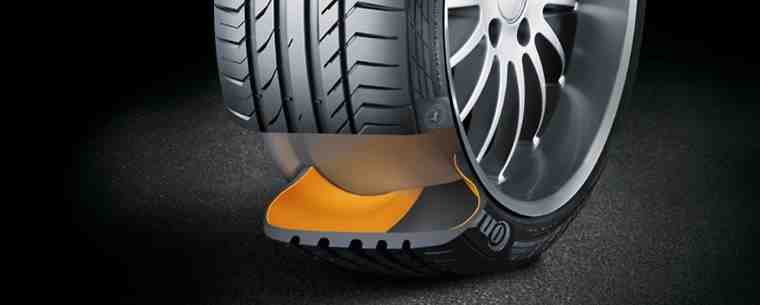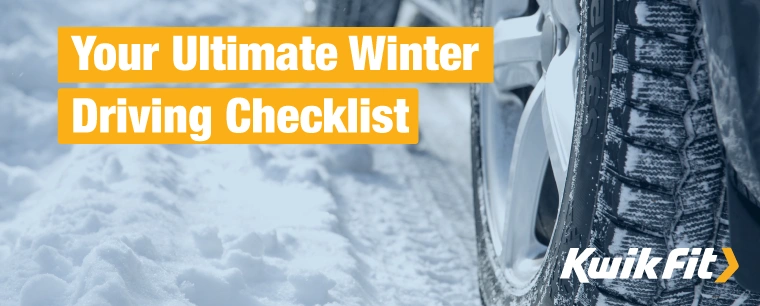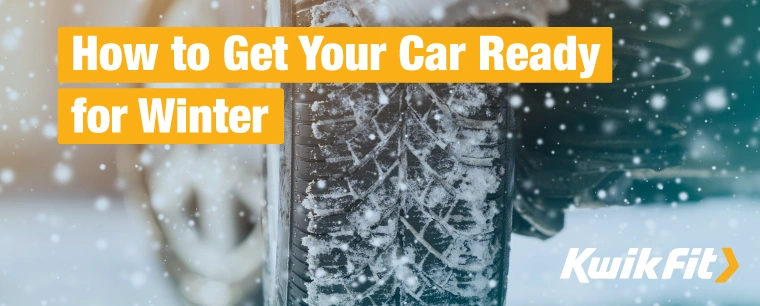What are Run Flat Tyres, and How do they Work?
Bradley Jando | Thursday 3rd June 2021 9:15am

Have you ever heard of run flat tyres? Do you know what they are? Are you aware that your car may be fitted with them?
When it comes to tyres, there’s a lot of technical jargon around which can be confusing. Run flat tyres are just such an example. You may have heard of people talking about them, or seen them mentioned online, but no one clearly explains what they are.
If this sounds familiar then don’t worry. In this article, Kwik Fit will make things clearer for you. We’ll also provide you with the important info you need to know when it comes to changing your run flats.
Do I have run flat tyres?
Firstly, start by opening the boot of your car. Lift the floor cover up, what do you see? If it’s a spare tyre nestling in the cavity or a foam filler tyre repair kit then your car isn’t fitted with run flat tyres. However, if you don’t see either then there is a good chance that your car is fitted with run flat tyres – or should be.
Run flats tyres have specially reinforced sidewalls that mean – even when you have a puncture – you can continue driving on them at a limited speed and for a limited period (a maximum speed of 50 mph for a maximum of 50 miles). This is typically within easy reach of a Kwik Fit centre.

There are three main advantages to having run flat tyres, the first two of which are to do with safety:
- The strengthened sidewall helps keep your car under control in the event of a puncture.
- You don’t have to change the wheel at the side of the road (one of the most dangerous situations you can put yourself in).
- No spare wheel means more space in the boot, less overall weight (after all, spare wheels are heavy) and as a result improved fuel efficiency and mileage.
So far so good, but what can be confusing is that run flats look pretty much the same as regular tyres, and increasingly cars being are fitted with them by vehicle manufacturers as “Original Equipment” (OE). Automotive marques like Mini, BMW, Mercedes and many, many more regularly fit Continental tyres as OE, including run flat tyres. As such, you may well be driving a car with run flats without even knowing it.
Okay, sounds good, but how do run flat tyres work?
The big difference with run flats is that they feature a reinforced sidewall construction which continues to support your car even if you have a puncture. It’s this super-tough construction that allows you to keep driving, safely. It’s a technology that tyre makers like Continental have developed to improve safety and the driver experience.
Continental’s SSR (Self-Supporting Runflat) technology can be found in many of their tyres, including the popular ContiPremiumContact 5.

What’s important, however, is that run flats must be used in conjunction with a Tyre Pressure Monitoring System (TPMS). This is important since without the automatic alert the TPMS provides, how would you know you’ve got a puncture?
Also important is that, if you do get a puncture, you must not to ignore the run flats’ 50 mile range limit. It’s vital to get the tyre changed as soon as possible, otherwise you risk damaging the wheel itself – a much greater expense than simply replacing your tyre.

Can I change run flat tyres with non-run flats?
While this may seem tempting (after all, run flat tyres are more expensive) it’s not a good idea.
Run flats often come as ‘Original Equipment’ – the tyres the car is fitted with when it leaves the factory. This often means that the car’s designers will have repurposed the space that would have ordinarily been for a spare tyre, with no spare tyre cavity and hence no spare tyre. If you replace a run flat with a non-run flat and then have another puncture, with no spare tyre in your boot you’d be stranded.
This is why – if you purchased your car second hand and you’ve discovered there’s no spare wheel in the boot – you must check to see if your tyres are indeed run flats.
Expert tyre advice and support
If you’re not sure how to tell if the tyres on your car are run flats or not, or to get other useful tyre advice and support, head down to your local Kwik Fit centre and get in touch with one of our expert tyre professionals. You can find your nearest centre here.
Any facts, figures and prices shown in our blog articles are correct at time of publication.
Featured Articles
Is Your Car Battery Ready for Winter?
Monday 11th November 2024
Is the UK on the verge of ‘the coldest winter for 50 years?’ Even if El Niño doesn't hit the UK this winter, reduce the risk of a winter breakdown by making sure your car battery is winter-ready.
Your Ultimate Winter Driving Checklist
Monday 31st October 2022
Driving in the colder months presents many challenges. Breakdowns are far more common in winter, so make sure you’re prepared with these essentials.
How to Get Your Car Ready for Winter
Wednesday 28th September 2022
Winter can be a harsh season for your car but planning ahead by carrying out some basic maintenance and packing some essential kit should help you avoid a winter breakdown.







